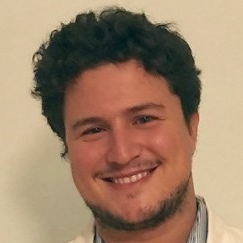Musculoskeletal Rehabilitation
A special issue of Applied Sciences (ISSN 2076-3417). This special issue belongs to the section "Applied Biosciences and Bioengineering".
Deadline for manuscript submissions: closed (31 March 2021) | Viewed by 127478
Special Issue Editors
Interests: rehabilitation; osteoporosis; sarcopenia; osteoarthritis; pain management; breast cancer related lymphedema; stroke; physical exercise
Special Issues, Collections and Topics in MDPI journals
Interests: rehabilitation; osteoporosis; sarcopenia; osteoarthritis; pain management; breast cancer related lymphedema; stroke; physical exercise
Special Issues, Collections and Topics in MDPI journals
Special Issue Information
Dear Colleagues,
Musculoskeletal disorders are defined as pathological modifications of the musculoskeletal system, including joints, ligaments, muscles, nerves, and tendons. Starting from an adequate diagnosis, a patient-tailored rehabilitation plan should focus on recovering mobility and muscle strength and performance and on improving patients’ quality of life. In this scenario, pain is considered the main symptom that commonly characterizes these conditions in both acute and chronic disease stages. In the recent past, interventional physiatry has been introduced as an effective treatment for musculoskeletal pain through a wide range of interventions including ultrasound-guided injections, mesotherapy, oxygen–ozone therapy, dry needling, neuromodulation (radiofrequency and peripheral nervous stimulation). Therefore, in the present Special Issue, we aim at describing the role of rehabilitation in the management of impairments due to musculoskeletal diseases, with a special focus on pain management, in order to boost patients’ level of functioning, independence of daily living, and quality of life.
Prof. Dr. Marco Invernizzi
Prof. Dr. Alessandro de Sire
Guest Editors
Manuscript Submission Information
Manuscripts should be submitted online at www.mdpi.com by registering and logging in to this website. Once you are registered, click here to go to the submission form. Manuscripts can be submitted until the deadline. All submissions that pass pre-check are peer-reviewed. Accepted papers will be published continuously in the journal (as soon as accepted) and will be listed together on the special issue website. Research articles, review articles as well as short communications are invited. For planned papers, a title and short abstract (about 250 words) can be sent to the Editorial Office for assessment.
Submitted manuscripts should not have been published previously, nor be under consideration for publication elsewhere (except conference proceedings papers). All manuscripts are thoroughly refereed through a single-blind peer-review process. A guide for authors and other relevant information for submission of manuscripts is available on the Instructions for Authors page. Applied Sciences is an international peer-reviewed open access semimonthly journal published by MDPI.
Please visit the Instructions for Authors page before submitting a manuscript. The Article Processing Charge (APC) for publication in this open access journal is 2400 CHF (Swiss Francs). Submitted papers should be well formatted and use good English. Authors may use MDPI's English editing service prior to publication or during author revisions.
Keywords
- rehabilitation
- musculoskeletal rehabilitation
- muscle strength
- pain
- pain management
Benefits of Publishing in a Special Issue
- Ease of navigation: Grouping papers by topic helps scholars navigate broad scope journals more efficiently.
- Greater discoverability: Special Issues support the reach and impact of scientific research. Articles in Special Issues are more discoverable and cited more frequently.
- Expansion of research network: Special Issues facilitate connections among authors, fostering scientific collaborations.
- External promotion: Articles in Special Issues are often promoted through the journal's social media, increasing their visibility.
- Reprint: MDPI Books provides the opportunity to republish successful Special Issues in book format, both online and in print.
Further information on MDPI's Special Issue policies can be found here.






